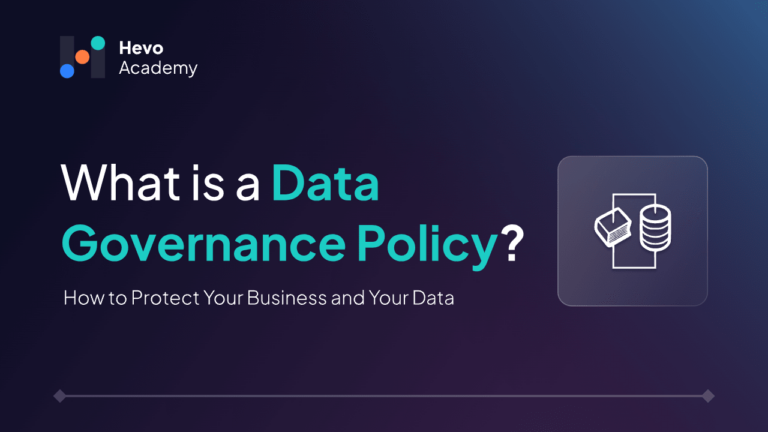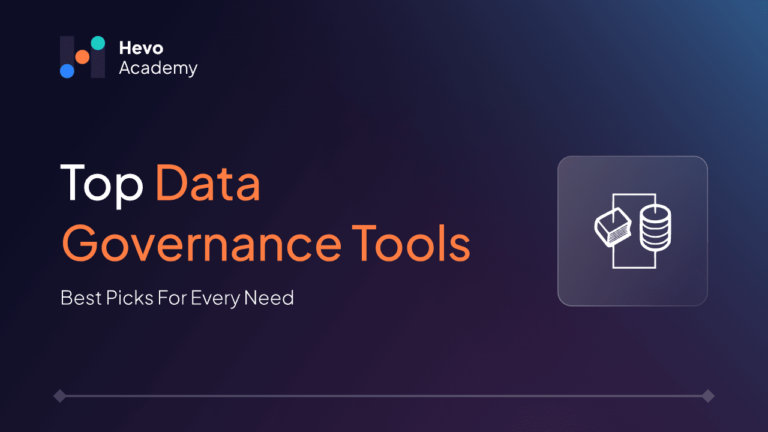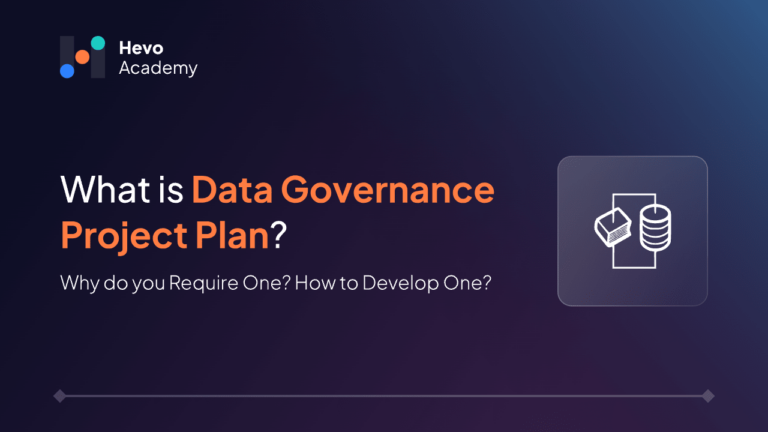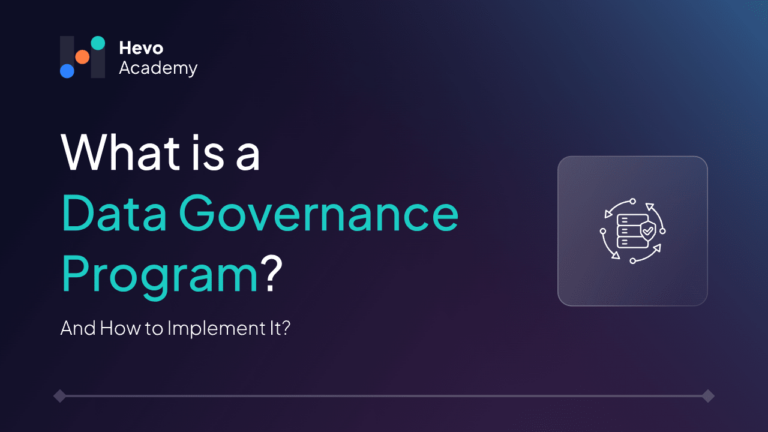Can you believe that more than 44% of companies don’t have a data governance policy? As data breaches continue to rise in frequency and costs, this statistic points out a critical shortcoming in the strategies of many companies. Data stands as an essential asset for any organization, but a significant number of businesses still find themselves unprepared to handle it efficiently or are not aware of how to manage it. A strong data governance policy can change that. Implementing a well-defined framework for data governance allows organizations to protect their information while increasing its value.
Table of Contents
In this piece, we’ll go through the concept of a data governance policy and the steps required for effective implementation. We will analyze real-world scenarios and provide actionable advice to help you kick off your journey.
What is a Data Governance Policy?
A data governance policy is a document that describes and defines the standards and processes for managing data in an organization. Data governance policies include a wide range of aspects such as data quality, authorization control and adherence to legal regulations such as GDPR in Europe or HIPAA for healthcare regulatory bodies. Data governance policy protects data and ensures its accuracy and accessibility. Embedding data architecture principles into your data governance policy ensures a scalable, flexible, and secure data management process, driving both compliance and business success.
For example, let’s take a financial institution that collects sensitive client information. A data governance policy for this institution would establish who can access this data, how it is stored, and how long it is kept. If a client requests to delete their data (GDPR requires), the policy ensures that the process follows the standards outlined in the document. This avoids both legal penalties and data mismanagement that could damage the institution’s reputation. This also serves to protect the customer’s data.
Businesses can avoid many risks, from data breaches to regulatory fines. They can increase trust in their data, which translates into better decision-making and improved business performance. A well-defined data governance framework along with a structured data governance checklist, helps businesses reduce risks and foster trust, leading to better decision-making and improved performance.
What are the Components of a Data Governance Policy?
There are various components of Data Governance. We can typically structure it as policy purpose, governance structure, management standards and security:
1. Policy and Governance Structure
The first step in drafting a data governance policy is to define its purpose and scope, why it is needed, and what it will cover. Then, you can define the roles and responsibilities that exist in the organization. For example, you may have questions like ‘Who is responsible for overseeing the policy? You can read our data governance blog to understand these roles in detail.
2. Data Access and Management Standards
Data management standards describe the guidelines for all the data processes: collection, processing, storage, maintenance, you name it. Only authorized people should be able to access specific types of data. You can see why big companies have an IT department to support employees in getting and restricting data access. It also addresses data security protocols, including encryption and authentication procedures to protect sensitive information.
3. Monitoring and Change Management
A policy is only effective if it’s followed. This component outlines how compliance with the data governance policy will be monitored. Will there be regular audits? What are the things that will be audited? These questions are important because it is defining these policies that should be enforced consistently. Data governance is always evolving along with data and new threats.
What are the Types of Data Governance Policies?
Data governance policies can vary widely depending on the needs and structure of the organization. The following categories usually cover most of the policies:
1. Data Quality Policies
These policies define standards for data accuracy, completeness, and consistency. They help ensure the data used across the organization is reliable and fit for decision-making.
2. Data Security Policies
Data security policies focus on protecting data from unauthorized access, breaches, or leaks. These policies outline encryption, authentication, and other protective measures.
3. Data Privacy Policies
Privacy policies define how an organization handles personally identifiable information (PII) and sensitive data. They ensure compliance with regulations like GDPR and HIPAA, protecting customer privacy.
4. Data Retention Policies
These policies specify how long data should be kept and when it should be deleted or archived. Data retention policies must follow the regulations that say how long data has to be stored.
5. Data Access Policies
Data access policies define who within the organization can access different data types. They help prevent unauthorized access and ensure that sensitive information is only available to those who need it.
6. Data Usage Policies
Data usage policies govern how data can be used within the organization. For instance, a policy may specify that customer data cannot be used for marketing purposes without consent. If you open a website in some countries, you can see that there is a consent form for using data for marketing purposes.
7. Compliance and Regulatory Policies
These policies ensure that the company adheres to the regulations. They show the steps needed to fulfill legal requirements and avoid financial penalties.
What are the Benefits of a Data Governance Policy?
There are many benefits to having and implementing a data governance policy:
1. Improved Data Quality
A clear data governance policy ensures that data is accurate, consistent, and trustworthy. This leads to better decision-making and improved data quality because teams can rely on the data they’re using. Additionally, you need a data governance roadmap to enhance data quality.
2. Enhanced Security and Privacy
By defining who can access data and how it is protected, a governance policy reduces the risk of data breaches and ensures compliance with privacy laws like GDPR or HIPAA.
3. Better Regulatory Compliance
Some industries have stricter regulations than others. This makes sense as financial and healthcare data are more sensitive than others. A governance policy ensures that your company complies with these laws.
4. Streamlined Data Management
A governance policy creates clear standards for data management and data lineage, reducing confusion and inefficiency. This can lead to faster and more effective processes across the business.
5. Increased Trust
Organizations that maintain clear and transparent data practices tend to earn greater customer and employee trust.
How Do You Write a Data Governance Policy Document?
Data governance policy may sound complicated to build. If you should break it into actionable steps, it gets simpler to understand:
1. Define the Policy’s Purpose and Scope
Start by identifying what data your policy will cover and why it’s important. Are you focusing on customer data, financial data, or internal documents? Clarify the purpose so everyone in the organization understands why the policy matters.
2. Identify Key Stakeholders
A data governance policy shouldn’t be created in isolation. There should be collaboration. Gather input from all departments that handle data.
3. Set Data Management Standards
Create standards for how data will be collected, processed, and stored. Be specific about formats, storage systems, and quality standards to ensure department consistency.
4. Outline Access and Security Rules
Define who can access what data and under what conditions.
5. Monitor Processes
You should audit processes to ensure compliance with the policy. This could include routine data quality checks, access reviews, or external audits.
6. Provide a Framework for Policy Updates
The policy needs to evolve as regulations change or new technologies are introduced. You should ensure that there is a clear process for policy reviews.
Who Should Be Involved in the Data Governance Policy Process?
As we discussed, data governance usually has a team that should include the right people. A firm policy requires input from the most qualified people in the organization. The stakeholders involved are:
1. Data Governance Committee
The Data Governance Committee provides guidance and ensures data consistency aligns with the business objectives. It mainly comprises senior executives and IT leaders who monitor the development and implementation of data governance policies.
2. Data Stewards
The data stewards are responsible for managing data daily. They manage operational aspects of data quality and policy. They ensure that data is clean, accurate, and compliant with policies.
3. Legal and Compliance Teams
Legal and compliance professionals ensure the data governance policy aligns with current laws and regulations.
4. IT and Data Security Teams
IT and security teams are responsible for the technical aspects of data management, such as database security and access control implementation. They focus on ensuring the policy’s guidelines are practical and enforceable.
5. Business Leaders and Department Heads
Leaders from different areas of the business need to participate in the policy development process. The policy then aligns with business goals and supports day-to-day operations.
Best Practices to Implement a Data Governance Policy Effectively
Implementing a data governance policy is not just about writing the document and making sure it just exists—it’s about embedding it into your organization’s culture and processes.
1. Define Roles Clearly
Everyone should know their responsibilities when it comes to data governance.
2. Start Small and Expand Big
Every business was once new to data governance. Start by experimenting in one department, and if it is successful, you can scale it across the business.
3. Leverage Technology to Automate Compliance
Many available tools can automate compliance checks and track data quality. Many software solutions can help streamline the enforcement of your policy.
4. Regularly Train Employees
Employees are the front line of data governance. Regular training ensures that they understand the policy. It should continue until everyone is comfortable with the process.
5. Monitor and Audit Data Regularly
Regular audits and checks ensure that your policy is followed and that your data remains accurate and secure. Set up processes for periodic reviews, and don’t hesitate to make changes when needed.
To learn more about data governance challenges and ways to overcome them, check out our blog.
6. Be Prepared to Update the Policy
The data landscape is constantly evolving. Be ready to update your policy to accommodate new regulations, technologies, or business needs.
Data Governance Policy Examples and Templates
We have talked enough about the lengthy details of data governance policy. Let’s share some real-world examples and see what policies are used by organizations:
1. University of California Data Governance Policy
The University of California’s Data Governance Policy is intended to manage and protect the institution’s vast data resources. It ensures compliance while supporting data accessibility and integrity. It’s a positive example of handling public and private information.
2. GDPR Data Governance Guide
The General Data Protection Regulation is a data protection law under the European Union and Economic Area. The GDPR Data Governance Guide provides an overview of data governance best practices under GDPR, focusing on how to protect personal data and comply with European regulations.
3. Australian Government Data Management Framework
Australian Government built a governmental data governance framework to provide standard rules, processes and accountability requirements in the public sector data.
4. NHS Data Governance Policy
The UK’s National Health Service provides a robust example of managing sensitive healthcare data and ensuring privacy and security for patient information.
5. World Bank Data Governance Guidelines
The World Bank’s guidelines provide a global perspective on data governance, offering a framework for managing data in diverse environments and across borders.
You can read this article Companies that Don’t Have Data Governance Policies to understand this better.
Conclusion
A strong policy defines a strong government. Data is the most valuable asset of an organization and data governance protects it. By following the best practices and involving all the stakeholders as a team, you can create a policy that protects your data and your company. You can study more of real-world data governance policies online and see that they all have one thing in common: consistency. Today, effective data governance is a necessity. Take your time to build a robust data governance policy and watch as it pays off in terms of security, trust, and business efficiency.
Data migration plays a vital role in implementing a strong data governance policy. Sign up for Hevo’s 14-day free trial and experience seamless data integration without any worries!
Frequently Asked Questions
1. How do you write a successful data governance policy?
Include key stakeholders, use plain language, and ensure the policy addresses data management, security, and compliance. Begin by identifying your data’s scope and purpose, then establish access and protection rules.
2. What is the data model governance policy?
A data model governance policy establishes guidelines for developing and maintaining data models to ensure accuracy, consistency, and alignment with the organization’s goals.
3. What are the roles of a data governance policy?
A data governance policy defines responsibilities across departments. It assigns roles such as data stewards, owners, security analysts, etc. to oversee different aspects of data management.
4. What is the data access policy governance?
The data access policy governance determines who in the company can access certain types of data and under what circumstances they can do so. This ensures that confidential information remains within reach of authorized people.






